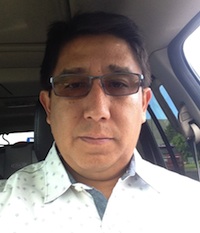 The Linux Foundation regularly awards scholarships as part of its Linux Training Scholarship Program. In the five years that the Linux Foundation has hosted this program, it has awarded a total of 34 scholarships totalling more than $100,000 in free training. In this continuing series, we are sharing the stories of recent scholarship recipients in the hope that they will inspire others.
The Linux Foundation regularly awards scholarships as part of its Linux Training Scholarship Program. In the five years that the Linux Foundation has hosted this program, it has awarded a total of 34 scholarships totalling more than $100,000 in free training. In this continuing series, we are sharing the stories of recent scholarship recipients in the hope that they will inspire others.
Enrique Sevillano (age 42) is a recipient in the Sys Admin Superstar category and works as an IT manager at an energy utility company in the United States. He recently decided to move the company’s architecture to Linux. By doing so, he says, they have optimized services on old servers that otherwise would have been cost prohibitive. Enrique says Linux and open source have allowed him to deploy a high-availability virtualization infrastructure as well as affordable storage and cloud solutions.
How did you become interested in Linux and open source? I have been an evangelist of the core concept of Linux and Open Source Software from the beginning of my career; however, it was in my current professional position that I could experience Linux’s full-blown benefits. It was an eye opener of the current reality for many of us. How to overcome the challenge of managing and deploying a very demanding, hardened, and complex computing system for the data center — such as the one used by energy utilities — with not enough budget to deploy a full HA (high availability) virtualization infrastructure using VMware or any other commercial solution nor to deploy expensive storage solutions?
I have been an evangelist of the core concept of Linux and Open Source Software from the beginning of my career; however, it was in my current professional position that I could experience Linux’s full-blown benefits. It was an eye opener of the current reality for many of us. How to overcome the challenge of managing and deploying a very demanding, hardened, and complex computing system for the data center — such as the one used by energy utilities — with not enough budget to deploy a full HA (high availability) virtualization infrastructure using VMware or any other commercial solution nor to deploy expensive storage solutions?
Thanks to Linux and open source, I was able to overcome that challenge. I was able to fully deploy an HA virtualization infrastructure for our data center, as well a deploy affordable storage and private cloud solutions based on Linux.
Another reason why I focused on open source and Linux was because standard commercial solutions provide very limited time for trials. However, those timeframes never synced with the time I had in order to test any IT solution at my own pace and using my own lab. Linux and open source is still the smartest way to do it for me.
Last but not least was standardization — being able to deploy IT services one way, the standard way, saved me a ton of time in comparison with commercial applications where I have to learn their ways, which are usually unique from anybody else, even if you trying to deploy the same IT service. It’s been nice to be able to deploy, secure, and integrate most of the IT services with one computing platform, that is the power of Linux.
What Linux Foundation course do you plan to take?
I am taking LFS230, Advanced Linux System Administration and Networking.
How do you expect to use the knowledge you gain from the course?
I am planning to use all this knowledge widely across all the company’s computing architecture, mainly in the networking side, as I am also planning to standardize the L2 and L3 layers across the company using Linux on white boxes that are compatible with Linux Open Networking system.
What are your career goals? How do you see a Linux Foundation course helping you achieve those goals?
With all my background and professional experience, I am ensuring my career as an expert of deploying Linux for the enterprise as well as transitioning to Linux from another computing platform. Linux security is a big portion of it, and as a result, I do see Linux Foundation courses as an essential part of my career. Short-term accomplishments that I have in mind are the Linux Foundation Certified Engineer certification as well as the Linux Security training course.
What other hobbies or projects are you involved in? Do you participate in any open source projects at this time?
My wife just was granted the Technology Teacher Statement of Eligibility from the Colorado Department of Education, and I am helping her start up a STEM (Science Technology Engineering and Math) program in our school district. This is a difficult path to take in the current situation of our school district, but we like the challenge. We are also trying to start up a robotics program using Raspberry Pi and/or Arduino hardware. We will present the program to the recreational center in our district, and for both programs, we are relying heavily on Linux and open source.


